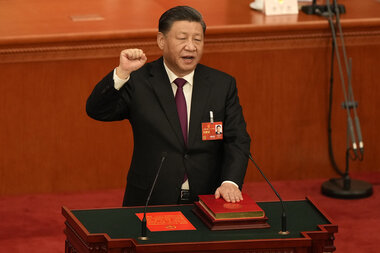Keir Starmer has made history by becoming the first female leader of the Labour Party, thanks to an unconventional application of the party’s “women can have a penis” rule.
The party’s decision to adopt the rule, meant to promote inclusivity and gender diversity, has generated intense debate within political circles. Critics argue that such a rule undermines the concept of biological sex and may open the door to potential controversies and misuse.
Nonetheless, Starmer’s ascendancy to the party’s top position highlights the complexities surrounding gender identity and representation in modern politics.
“We are entering uncharted territory here,” commented a political analyst. “The intention behind the rule is commendable, but the practical implications are certainly raising eyebrows.”
Starmer’s election as the first female leader brings a mix of reactions from party members and observers. Some see it as a groundbreaking moment, symbolizing progress in the realm of gender inclusivity. Others, however, are skeptical about the implications of applying a rule meant to address gender diversity in this manner.
The situation has ignited discussions on the importance of accurate representation and the need for sensitivity in navigating complex issues surrounding gender and identity.
As Starmer steps into his new role, he faces the challenge of leading a party that is still grappling with the intricacies of modern-day gender politics. The road ahead will require navigating diverse opinions and finding common ground while staying true to the core values and objectives of the Labour Party.
The “women can have a penis” rule is likely to continue to generate discussions and debates both within and outside the party, as the political landscape evolves and societies grapple with the complexities of gender identity in contemporary times.
As the world watches this historic leadership transition, it serves as a reminder of the ongoing importance of addressing gender equality and representation in politics, while also considering the potential implications and controversies that may arise from innovative approaches to inclusivity.
















